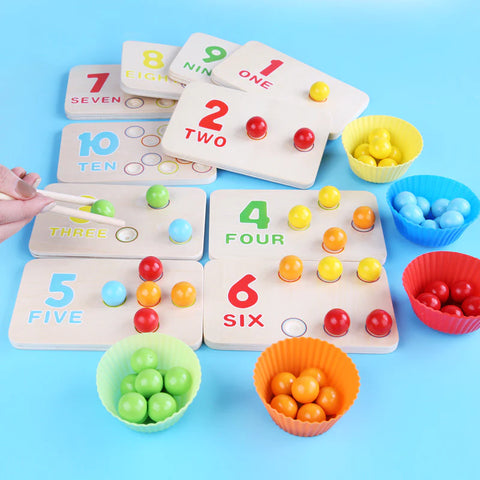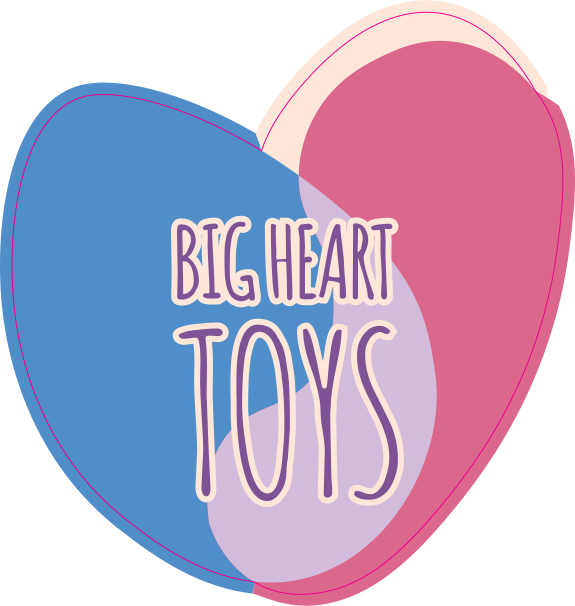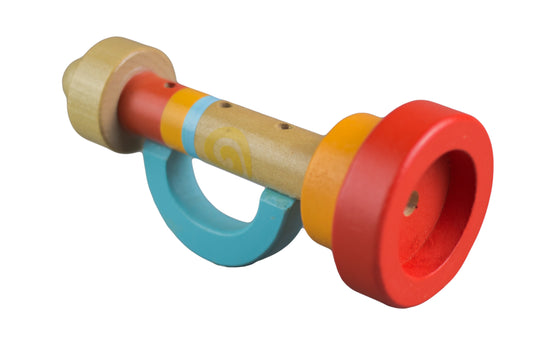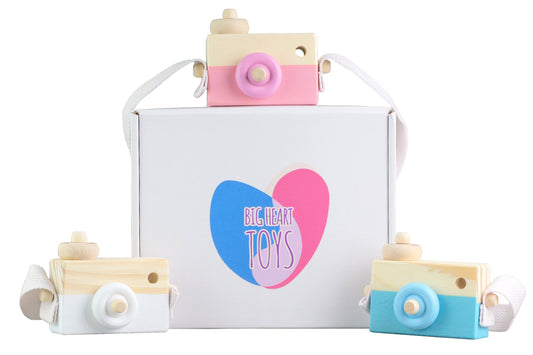Many people associate sensory play with toddlerhood or sensory-sensitive children, but one of the most vital times to integrate sensory play is actually infancy. Sensory play is crucial for development. It allows children to stimulate their senses, promotes brain growth and cognitive development, and encourages early sensory integration.
Understanding the importance of sensory activity is one thing, but knowing where to begin is a whole different ball game. Many parents struggle with knowing what to do during the day with their little ones. You’ve done all the things; you read a book, went on a walk, played with some toys, ate a snack, took a nap … and it’s still only 8:30 in the morning. What’s next?
We’re here to help with fun sensory activities your babies will love!
What Is Sensory Play?

Sensory play engages children (and adults!) in activities that stimulate their senses — sight, taste, smell, touch, and hearing. It often involves exploring new textures, materials, colors, scents, or tastes allowing children to develop these senses more finely. This helps them make sense of the world around them through exploration.
Sensory play involves using specific toys to explore these different sensory experiences. You can integrate senses by using multiple at a time.
What Are the Benefits of Sensory Play?
Seemingly simple activities can have a huge impact on growing minds. From brain development to critical life skills, sensory play has amazing benefits:
Cognitive Development
Sensory play is known for enhancing cognitive development. Essentially, cognitive development refers to the growth of one’s mental processing. It helps children with their ability to focus and build on their attention span. It creates strong sensory memories, helping their ability to recall information and remember concepts.
This important play stimulates creativity and imagination as children engage in open-ended activities. They can think outside the box and come up with innovative ideas. Sensory play is purposeful but not directive, so children are able to create their own ideas and solutions.
Problem-Solving
Problem-solving is a large portion of cognitive development and is directly addressed in sensory play. The ability to explore and manipulate different textures, materials, and objects opens the door to experimentation. Young people discover cause-and-effect relationships and find their own solutions through trial and error.
Observing the way things interact can help their brain develop around natural reactions. They are mentally solving problems and answering their own curiosities. They are learning about different perspectives and possibilities.
Sensory activities present open-ended scenarios that require children to think critically and come up with creative solutions. They’re encouraged to analyze sensory inputs, make connections, and devise strategies to overcome challenges or create desired outcomes.
Sensory Development
Each of the five senses can be developed through open sensory exploration. The exposure and intentional use of different senses promote the development of sensory pathways in the brain. Babies learn to process and combine sensory experiences to strengthen their sensory integration.
In simpler terms, sensory play increases sensory awareness and helps children understand their own senses and how to use them when interacting with the environment. They develop a better understanding of the body’s responses to certain stimuli and can learn to regulate their own sensory reactions.
Sensory play is widely known for the soothing and calming effects it has on babies and children. It can help regulate big emotions, reduce stress, and decrease feelings of anxiety. It creates a baby-safe, enjoyable outlet for emotional expression and self-soothing.
Encouraging sensory play from infancy can potentially reduce the risk of sensory sensitivities later in childhood. There are two types of sensory sensitivities: sensory seeking and sensory avoiding.
Sensory seekers are those who underreact to sensory-stimulating situations compared to others; they seek out more sensory stimulation to soothe. Sensory avoiders, on the other hand, are those who get overstimulated by sensory stimulation and seek to avoid new sensory experiences.
Engaging in early sensory play can set growing minds up for sensory exposure and desensitization. Exposing children to a wide variety of sensory stimuli in a controlled and safe environment and regularly exposing their senses to new things can help desensitize their sensory system over time.
Of course, there are many factors that go into sensory sensitivities. While it isn’t a one-size-fits-all solution, getting babies used to sensory stimulation from a young age is still helpful.
Language Development
In sensory play, opportunities are provided for children to express experiences and communicate their observations and preferences. This promotes language development and vocabulary expansion as they describe the different factors of their sensory perceptions.
In infancy, this starts small with small coos and sounds in reaction to certain events. You can model communication by narrating what your baby is seeing, hearing, or feeling. As they get older, they may express their thoughts and feelings during sensory play, engaging in conversations with others.
Fine/Gross Motor Skill Development (and Tummy Time)
Many sensory experiences involve manipulating objects, pouring, shaking, or scooping. These activities develop fine motor skills such as hand-eye coordination, finger dexterity, and grasping abilities.
In terms of gross motor, sensory play can require children to engage their core muscles for stability or balance. It can help children navigate spatial awareness and be more in tune with their body’s movements.
Incorporating sensory play into tummy time can provide a focus for your baby and help them engage their core muscles for longer periods of time. Babies often get bored during tummy time, but this gives them a reason to explore and a distraction. Shakers, water mats, soft activity books, and more can stimulate a baby’s senses and make tummy time more appealing.
Safety Considerations

Small Toys Might Be Safer for Older Children
Beware of choking hazards. Many sensory-enticing toys involve small parts or items that can be dangerous to infants and toddlers. Sensory bottles, bags, mats, and sensory bins are great for exploration and so much fun for older children! However, many come with age recommendations and should be used only under supervision.
You may want to consider larger, bulkier sensory items for infant-aged children. Textured stuffed animals are great for this age range — and make for very cute, scrapbook-worthy photos.
Ensure Everything Is Taste-Safe
What’s the first thing a baby does when they pick something up? Put it in their mouth, of course. Be careful with any sensory items you introduce to ensure they are safe and free of toxins.
There are a variety of sensory toys, mats, and items that come with liquid inside. These items are usually safely contained or glued shut, but sometimes things break or tear. It’s always better to be safe than sorry.
Sensory Play Activities for Babies
Sensory play activities are enjoyable for babies, create bonding time between parents and their children, and are essential for overall child development.
1. Rattles
Rattles make excellent sensory toys for babies. The sound and movement of the rattling beads inside capture their attention and stimulate their auditory and visual senses. Babies can grasp, shake, and explore the rattle, developing fine motor skills and hand-eye coordination.
Rattles made with different textures and shapes provide additional sensory stimulation, too. Rattles are great toys to capture attention during tummy time to help your baby build strength and stamina.
2. Sponges During Bathtime
Bathtime offers a wonderful opportunity for sensory play. Introducing sponges adds a tactile element to the experience. Babies can touch, squeeze, and feel the textures of the sponge while exploring the water. They can observe how the sponge and water react to one another, exploring cause and effect as the sponge releases water.
This water play activity enhances tactile senses and is a very easy addition to a daily routine.
3. Peek-a-Boo
Peek-a-boo is a classic game that engages a baby's visual and social senses. Parents capture their baby’s attention by hiding and revealing faces and objects — this promotes curiosity and sets the stage for productive social interactions later on in life. Beyond that, this activity helps develop object permanence, memory, and cognitive skills while allowing babies and parents to bond and giggle together.
4. Sensory Bottles
Sensory bottles are DIY toys that are captivating and versatile for babies. They are typically made with clear plastic bottles filled with water, food coloring, and various stimulating materials such as glitter, beads, or small objects. Babies can shake, roll, explore, and manipulate the bottles to observe the movement, vibrant colors, and visual effects.
Sensory bottles provide visual stimulation and promote concentration and visual perception. This, however, is one of those toys that should be used with supervision and safety precautions. If you make your own, use safe materials and glue the lid shut to encourage safe use.
5. Sensory Board
Sensory boards are tactile and interactive surfaces that offer a range of sensory experiences for babies. They can be made by attaching different textures, such as fabrics, cardboard, ribbons, etc., to a board. Babies can touch and explore textures, enhancing their tactile senses and fine motor skills.
Sensory boards can introduce babies to various materials and encourage curiosity and exploration. These boards can be made simple for younger babies or more advanced for older children. Some even include things like zippers or velcro to make them more interactive.
Sensory boards are another great tummy time tool, perfect to act as an activity mat while children work on their core muscles.
6. Ice Cubes in a Bowl
Exploring ice cubes in a safe and controlled setting can be an intriguing sensory activity for babies. Place a few ice cubes in a shallow bowl and let babies touch, hold, manipulate, and observe the melting objects.
The cold sensation and changing state of the ice stimulate tactile and temperature senses. If babies are willing to hold and play with the ice, this also helps develop grasping and hand-eye coordination. However, this is one of those activities to be cautious with, as you don't want them to put the ice in their mouth. Make sure you don’t use this one as an independent activity.
7. Sensory Bags
Sensory bags offer an easy, mess-free way for babies to explore different materials and textures. You can DIY this by filling a Ziploc bag with things like pom poms or cooked pasta. Seal the bag tightly, and place the objects inside a second bag for safety measures.
Babies can manipulate and squish the bag, observing the movement between their fingers and feeling different objects through the thin plastic. Sensory bags provide tactile and visual stimulation while minimizing the mess.
8. Toys Trapped in Jello
This sensory play activity combines tactile exploration with a sense of discovery. It is a fun and exciting game to save trapped toys and can make for a yummy snack if ingested accidentally. This is a messy play, so be prepared to do this at an outside table or with a tablecloth to help with easy cleanup.
Note that the CDC recommends solid foods to a six to eight-month-old baby to start, increasing the variety of foods with age.
Simply fill a shallow bowl with a few plastic toys. For safety purposes, make sure these toys are ones your child would typically play with and nothing too small that can pose a choking hazard. Prepare jello in the bowl and let it set with the toys inside.
Once the jello sets, the baby can squish, dig, and squeeze their hands inside to save their toys. They can also use other materials, such as a spoon, to enhance fine motor skills. This activity offers a unique tactile experience, enhancing sensory exploration.
Summary: Big Sensory Experiences for Little Ones
Incorporating sensory play into your infant’s daily routine really is a win-win. As the parent, you feel like you are planning purposeful play and have the satisfaction of knowing that the toys you choose for your baby will benefit them.
Your little one will gain so much from these meaningful experiences. You are creating the opportunity for them to explore their world, develop their abilities, and foster overall growth. Sensory play offers a wealth of benefits for infants and young children, enhancing cognitive, emotional, and physical development.
Lay a strong foundation for a future love of learning by stocking up on the best sensory items and investing in your child’s sensory development!
Sources:
Sensory Integration | StatPearls | NCBI Bookshelf
Sensory Input | APA Dictionary
14.5 Sensory and Motor Pathways | Oregon State University
Sensory Seeking vs. Sensory Avoiding in Children | Understood
Tummy time for babies: in pictures | Raising Children Network
When, What, and How to Introduce Solid Foods | Nutrition | CDC






